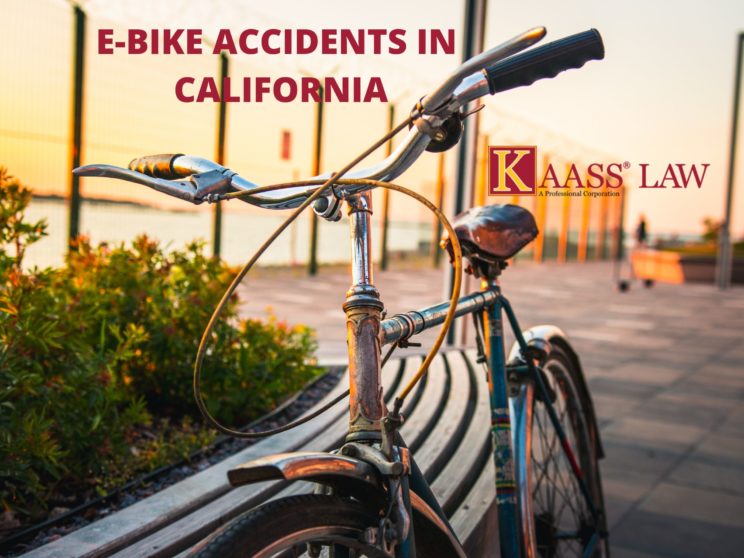According to California Vehicle Code Section 406(a), a “moped” or “motorized bicycle” (also known as an electric bike or e-bike) is capable of no more than 30 mph on level ground with fully operative pedals for human propulsion, or an electric motor, with or without pedals for human propulsion or a motor producing less than two gross brake horsepower and an automatic transmission.
In California, electric bikes are not considered motor vehicles, and the riders are not required to have a license for operating them. An e-bike doesn’t need to be registered with the state. E-bike riders are not required to comply with California’s financial responsibility law and are not required to have liability insurance.
California State legislature passed Assembly Bill No. 1096 which classifies e-bikes into 3 categories based on the method of operation and maximum speed.
Three Classes of Electric Bicycles Under California Law:
Class 1: E-bike with a top assisted speed of 20 mph that must be pedaled
Class 2: E-bike with a top assisted speed of 20 mph that does not have to be pedaled
Class 3: E-bike with a top assisted speed of 28 mph
California laws also require the rider to obey the following basic bicycle laws:
- Driver shouldn’t ride on the freeway with his e-bike
- E-bike riders under the age of 18 are required to wear a helmet
- It is prohibited to ride an e-bike under the influence of alcohol and drugs
Injuries Associated With Electric Bikes
E-bike accident injuries can be extensive, including fatalities. As e-bikes are faster and heavier than conventional bicycles, the e-bike force of impact on a pedestrian can be up to forty-five times harder.
Here are the most common types of injuries associated with e-bikes:
- Head injuries, including traumatic brain injury
- Broken bones
- Back and spinal injuries
- Cuts and bruises
Determining Liability for Electric Bike Accidents
Driver at Fault
For holding an at-fault party accountable for the accident, a victim proves that the at-fault driver’s negligence was the main factor in the crash. If the driver was impaired, speeding, distracted, or otherwise careless, he can be liable for caused injuries.
There are several ways of proving the fault and determining the liability.
- Asking witnesses about the crash.
- Watching the cameras that can show how the crash happened
- Finding out if the driver was ever arrested for reckless behavior or cited by the authorities
- Taking photos of the accident and preserve the bike for a thorough inspection
The City at Fault
In case a defective or dangerous roadway caused a bicycle crash, the city or governmental agency, responsible for maintaining the roadway can be liable for the accident.
Manufacturer at Fault
In case the crash took place because of a malfunction with the e-bike itself, the victim can sue the manufacturer with a defective design, defective manufacturing or labeling or warning error claims
Other Parties That Can Be Liable for Electric Bike Accidents in California
Potentially liable parties in personal injury electric bike lawsuits also include pedestrians and other e-bike drivers.
Types of Damages That Can Be Recovered from a Successful Electric Bike Accident Claim
A successful e-bike accident claim will include compensation for:
- Medical expenses
- Hospitalization fees
- Lost wages
- Physical pain
- Lost future wages
- Cost of rehabilitation
- Mental anguish and other related damages.
If you or a loved one has been injured in an e-bike accident we encourage you to contact experienced bike accident attorneys at KAASS Law for a free consultation today.


What happens when a minor (14 years old) rides a Class 3 bike (law requires they be over 16) and they hit a car? Are the parents responsible? Does the Class matter?
Pingback:Are Damages Recoverable in a Bike Accident? - KAASS LAW